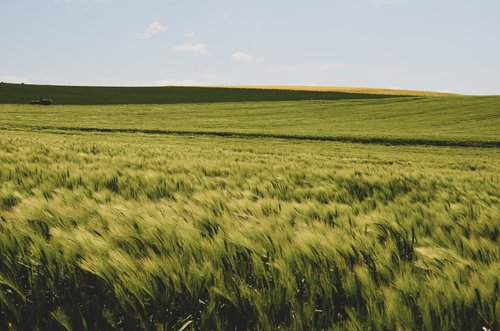A New Variety of Durum Wheat with Intermediate Resistance to Fusarium Head Blight. This Changes Everything!

Written by: Michelle Boulton
Canada’s southern prairies are well suited to durum wheat production, which makes us one of the world’s top producers. Growing demand and higher prices are good news. However, producers are also facing growing challenges, such as increasingly unpredictable weather because of climate change and susceptibility to fungal diseases like Fusarium head blight (FHB).
Durum was introduced in Canada in the 1910s and breeders released the first Canadian variety in 1963. From the very beginning, durum has remained stubbornly susceptible to FHB. That is, until a new variety was developed by breeder Yuefeng Ruan and his team at Agriculture and Agri-Food Canada’s Swift Current Research and Development Centre.
“This new variety, called AAC Schrader, is the first durum variety with intermediate resistance to FHB,” explains Ruan. “It has really changed a lot of things.”
“When I submitted my proposal for funding five years ago, we used Strongfield as a check in registration trials. Now, we will be using AAC Schrader as a check. So, everything — yield, FHB resistance, quality, and drought tolerance — will be compared to AAC Schrader.”
FHB is prevalent in wet years, especially when the moisture comes early in the growing season. “If there’s a lot of moisture at flowering, you’ll see FHB infections right away,” explains Ruan.
While southwestern Saskatchewan is typically semi-arid, making it a good place to do drought tolerance breeding for crops like durum, “climate change is resulting in unpredictable weather conditions during the field season, such as one year being dry and the next being wet.” This has made FHB the biggest threat to durum production.
Because the environment has such an influence on FHB, it adds challenges for breeders. “In the FHB nurseries, depending on the environmental conditions, a variety could look like it has FHB resistance, but in another nursery, the same line could look like it’s susceptible,” he says.
To compound these challenges, “there may be hundreds of minor genes that contribute to FHB resistance in durum. Finding the right combination of genes is made more complicated by the environmental issues,” he says.
And breeders are not just selecting for FHB resistance. “We have to plan for a lot of different things, such as wet years and dry years, in our breeding. And we’re not just selecting for FHB resistance; we’re also selecting for yield, drought tolerance, quality . . . lots of different traits.”
Another increasing problem for his breeding program is ergot. “We haven’t released any ergot-resistant varieties yet, but we’re working hard on that,” he explains. “It’s in the pipeline, but we’re still testing potential lines.”
Ultimately, he’s looking to produce a durum variety that is high yielding, has great quality, and is resistant to both FHB and ergot. “All together, that is a comprehensive package, but it will take time,” he explains.
He’s grateful for the funding support this Wheat Cluster project has received from Agriculture and Agri-Food Canada through the AgriScience Program, which is part of the Canadian Agricultural Partnership, a federal, provincial, territorial initiative. The project also received funding from Alberta Wheat Commission, Saskatchewan Wheat Development Commission, Manitoba Crop Alliance, and Western Grains Research Foundation.